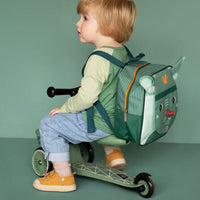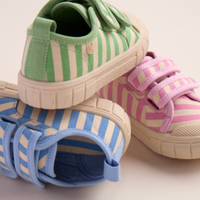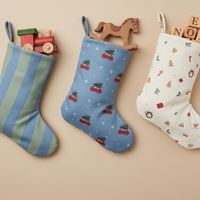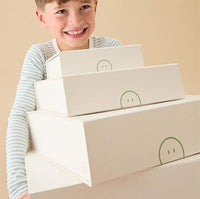An Introduction to Baby Reflux

Do you see your little one bringing up milk during or shortly after feeding? Reflux, or known as possetting, happens when the swallowed milk comes back into your baby’s food pipe. It can be frustrating and annoying, but at least 40% of babies experience it, so there is nothing to worry about. And it usually gets better by the time your little one reaches their first birthday and has a mature digestive system. Here is a useful introduction to Baby Reflux to make sure you find answers to your questions.

What causes Reflux in babies?
It usually happens due to a baby’s immature oesophagus (food pipe) and stops when the ring of the muscle develops there with time. This means that your baby will grow out of reflux, just like the 90% of babies who have it get better on their own before the end of their first year.
How to tell if your baby has reflux?
- Spitting up milk during or shortly after feeds
- Showing feeding difficulties, like refusing, choking or gagging
- Excessive crying or crying while feeding
- Having ear infections frequently
- Getting persistent hiccups and/or coughing
What would help?
- Feeding your baby in an upright position
- Making sure to hold your baby upright for 20-30 minutes after a feeding session
- Giving your baby smaller, but more frequent feeds
- Burping him every 2-3 minutes during feeds if you are bottle-feeding
- Raising the head end of baby’s cot
When to go to see doctor?
Reflux is a common problem in babies under the age of 1 and usually you don’t need to get medical advice, but it would be better to contact your GP or midwife if you notice that your baby:
- has reflux symptoms frequently
- is very irritable during or after feeds, crying and arching his back
- vomits large amounts up to two hours after feeding
- is bringing up green or yellow vomit, or vomit that has blood in it
- seems to have a sore tummy or throat
- isn't gaining weight or losing weight
What is the treatment? 
If your doctor finds a problem or unusual symptoms in your little one, she might advice one of these following medicines:
- alginates – these form a protective barrier over stomach contents, stopping them travelling up and irritating the oesophagus. They may be used if changing the way you feed your baby doesn't help.
- proton pump inhibitors (PPIs) and H2-receptor antagonists – these reduce the level of acid in the stomach, so the stomach contents don't irritate the oesophagus as much. They may be recommended if your baby appears to be in discomfort or is refusing feeds.
And in a very rare situations, for example when the the baby has serious underlying conditions, surgery might be needed to treat GORD by tightening the ring of muscle at the bottom of the oesophagus. Surgery may also be needed if there's a blockage or narrowing in the oesophagus, stomach or small intestine.
To make sure that we are providing you reliable and credible introduction to Baby Reflux, this article is curated from information from the NHS and the BabyCentre Medical Advisory Board.
For some more useful information on Baby Reflux, follow us on @babymoriofficial and tune in to our LIVE Q&A sessions with the experts on this topic.















